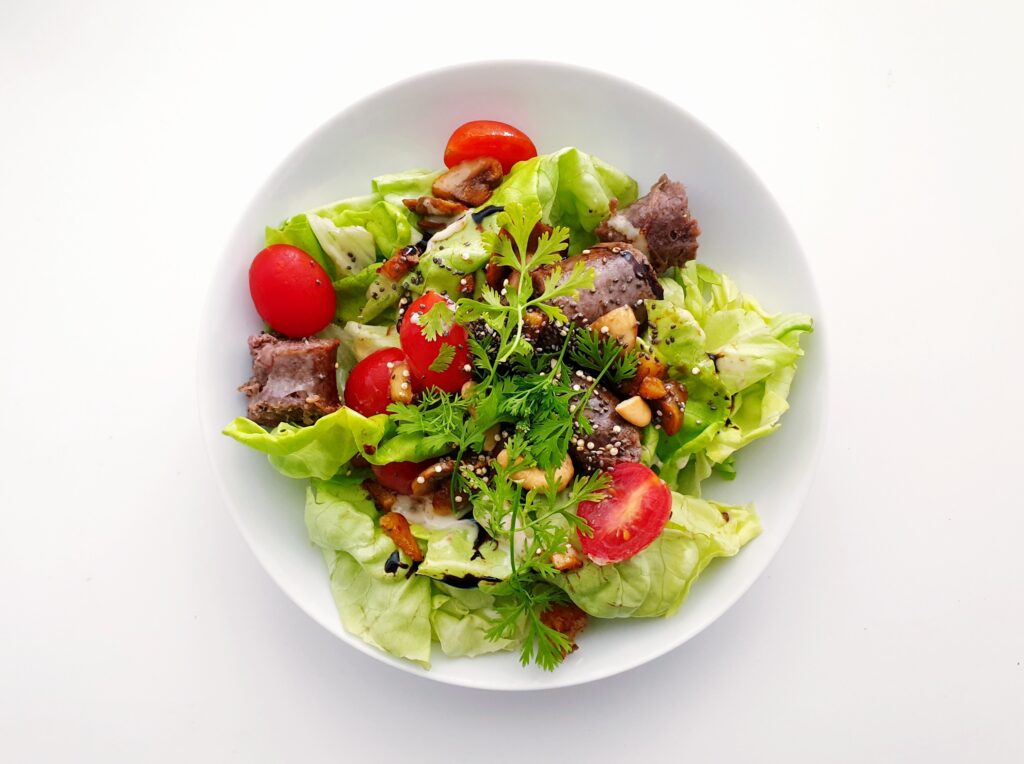
Low calorie foods are a fantastic way to add volume and bulk your meals; keeping you feeling fuller for longer. Quite often, when people decide to reduce their calories for weight loss, they will sacrifice portion size and feel hungry. Vegetables take the prize for offering large volume for very little calorie intake and adding these to your meals will help reduce the calorie count. Some fruits such as berries do the same. Fruit and vegetables are also rich sources of vitamins and minerals, boosting your health in the process, and can be eaten as a snack or added to meals.

Add low calorie vegetables to your carbs.
Adding vegetables to carbs such as rice, grains and pasta will bulk out the volume of the meal. You will also get a nice boost in vitamins and minerals. Try these great suggestions:
- Add courgette, aubergine and baby tomatoes to Italian pasta meals.
- Add sweetcorn and edamame beans to rice.
- Make swede and carrot mash to go alongside your regular mash.
- Mix cauliflower rice with rice.
- Add mushrooms and peppers to sauces.
You need fewer starchy carbs than you may think, so adding vegetables to increase your portion size can help keep the balance of a meal that would usually be carb heavy.
Have a side salad with most meals.
Most meals can accommodate a side salad. There maybe a few meals where this would be strange, but a nice fresh salad will go with most things. Make your salads interesting by choosing a variety of vegetables:
- Spinach
- Lettuce
- Beetroot
- Tomatoes
- Cucumber
- Celery
- Grated carrots
- Sweetcorn
- Edamame beans
- Radish
Eat a low calorie starter before your main meal.
Two great starters. Soups and salads. If a side salad is out of the question for the main, why not add a salad starter? Soups are also easy to make with a blender. Keep them vegetable based for low calorie, high nutrients. A starter of soup or salads will curb your appetite for the main meal, meaning you are likely to eat a smaller portion.
Increase your vegetable portions.
Try and get used to making 1/3 to 1/2 of each meal all about the vegetables. You can do great things with vegetables by using different cooking methods and some herbs and spices.
When you are feeling hungry, vegetables are a great food to eat, knowing that they have a lower calorie count. So when you are reaching for extra helpings, go for more vegetables.
Add low calorie berries and zero fat yoghurt to your breakfast.
Eat it before a cooked breakfast as a breakfast starter or add it to oats or cereal. Berries such as blueberries, raspberries, and strawberries are low in calories and loaded with nutrients. Zero fat Greek yogurt comes in at approximately 60kcal per 100ml making this a perfect low calorie pairing.
This versatile breakfast option is great at any time of the day. Have it as a dessert too, and if you throw frozen berries into the blender with your yogurt, you can make a delicious, healthy ice cream alternative.
Eat the right amount of protein
Eating the right amount of protein helps you to feel full, as protein is satiating. It is also important that you eat the correct amount so that your body has the amino acids it requires as building blocks of the body.
Aim for 1g-1.6g of protein per kilo of bodyweight. 1g is a good amount for the average person, but if you do a lot of physical activity, you may need more. If you work out regularly and lift heavy weights, you should aim for 1.6g per kilo.
